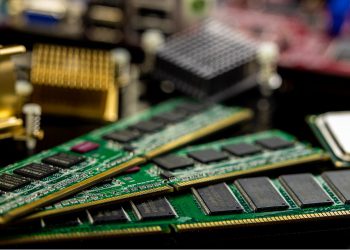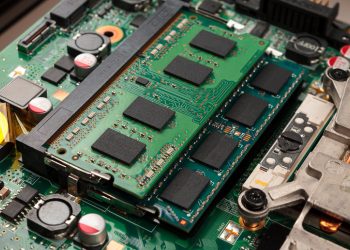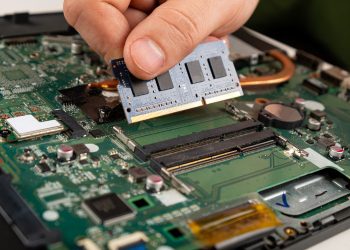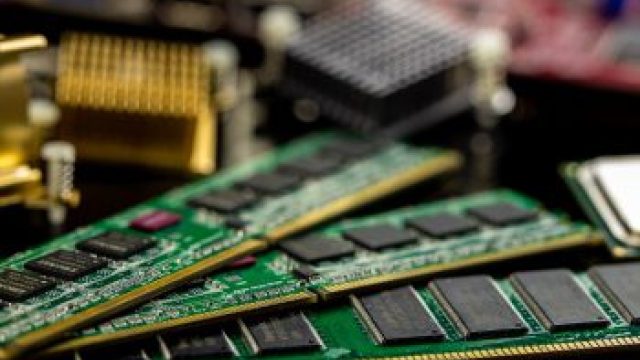Fortnite, the gaming sensation that took the world by storm, has captured the hearts of millions. But to truly immerse yourself in its vibrant landscapes and fast-paced battles, you need the right hardware setup, especially when it comes to RAM.
In this article, we’ll embark on a journey to uncover the optimal RAM requirements for Fortnite. From minimum specifications to future considerations, we’ve got you covered.
Understanding Fortnite’s System Requirements

When it comes to system requirements, Fortnite has both minimum and recommended specifications. These requirements serve as the foundation for an enjoyable gaming experience. However, one key player in this setup is RAM.
RAM, or Random Access Memory, plays a significant role in gaming performance. It’s the memory that your computer uses to store data that’s currently being used or processed.
In Fortnite, RAM influences various aspects of the game, from smooth rendering of graphics to seamless gameplay.
Factors Influencing RAM Requirements
In-game Settings
The graphics settings you choose in Fortnite can significantly impact RAM usage and overall performance. From low to epic settings, each level of detail demands varying amounts of RAM.
The higher you go, the more RAM is required to handle the increased texture quality, shadows, and effects. So, if you’re aiming for that cinematic experience with epic settings, be prepared to allocate more RAM.
Background Applications
Gaming is rarely an isolated activity. Many players multitask, whether it’s streaming, chatting, or having other applications running in the background. This multitasking consumes additional RAM.
When you divide your RAM between Fortnite and these applications, you risk slowing down your game or even encountering crashes. Balancing RAM allocation is crucial to ensure smooth gameplay.
Related Article: What RAM Speed Should I Get: Unraveling the Mysteries
RAM Recommendations for Different Configurations
Entry-Level Systems

If you’re playing Fortnite on a budget laptop or PC, the minimum RAM requirement is essential. For playable performance, 8GB might suffice. However, to enjoy a smoother gaming experience, consider upgrading to 16GB.
This will allow your system to handle the game’s demands while still leaving room for background processes.
Mid-Range Systems
Mainstream gaming PCs require more firepower. To comfortably run Fortnite on medium to high settings, 16GB of RAM is recommended.
Additionally, if you plan on streaming your gameplay while playing, extra RAM will prevent your system from struggling.
Streaming software and background applications can quickly eat up your resources, so having 32GB might be a wise investment.
High-End Systems
Gaming rigs and performance PCs aim for the best. If you’re chasing those epic settings and high frame rates, 32GB of RAM should be your starting point.
These systems often serve multiple purposes, including content creation, rendering, and heavy multitasking. With 32GB or more, you can conquer Fortnite at its best while effortlessly juggling other tasks.
Impact of RAM on Performance
Frame Rates and Frame Drops
Insufficient RAM can deal a blow to your frame rates, resulting in choppy gameplay. When RAM is overwhelmed, your computer relies on slower storage options, causing delays in data retrieval.
This can lead to inconsistent frame rates and frustrating frame drops. Adequate RAM ensures a stable and smooth gaming experience, even during intense battles.
Loading Times
RAM also influences loading times and texture pop-in. A higher RAM capacity allows the game to store more data in memory, reducing the need to fetch information from storage devices like hard drives or SSDs.
This means faster loading screens and fewer instances of textures taking a moment to fully load. While SSDs do impact loading times, RAM complements their speed to create a seamless experience.
Upgrading RAM for Fortnite
Steps to Determine Current RAM Configuration
Before considering an upgrade, understand your current RAM configuration. Check how much RAM you have and whether it’s operating in single-channel or dual-channel mode.
Dual-channel setups provide a performance boost by allowing data to be processed more efficiently.
Guide to Selecting Appropriate RAM Upgrades
Matching your existing RAM specifications is crucial when upgrading. Ensure the new RAM modules match in terms of speed, size, and type.
If possible, opt for the same brand and model. However, if you’re starting from scratch, aim for higher capacity modules (16GB or 32GB) to future-proof your system.
Installation and Considerations
Installing RAM is relatively straightforward. However, be cautious of static electricity, and follow the motherboard’s manual for proper installation.
While compatibility issues are rare, it’s wise to check your motherboard’s QVL (Qualified Vendor List) for verified RAM modules. This helps prevent any unexpected hiccups.
Monitoring and Optimizing RAM Usage
Overview of Monitoring Tools for RAM Usage
Several software tools allow you to monitor RAM usage. Task Manager (Windows) and Activity Monitor (macOS) provide insights into how much RAM is being utilized by Fortnite and other applications. This information helps you identify potential bottlenecks and optimize accordingly.
Tips for Optimizing RAM Usage for Fortnite

To ensure Fortnite gets the RAM it deserves, close unnecessary background applications before gaming. This frees up more memory for the game to use.
Additionally, adjusting in-game settings to a level that your system comfortably handles will prevent overloading your RAM and CPU, resulting in smoother performance.
Related Article: Laptop RAM vs. Desktop RAM
Future Trends and Considerations
As games continue to evolve, so do their system requirements. Upcoming updates to Fortnite might demand more RAM to support enhanced graphics and features.
Furthermore, the advancement of technology, including DDR5 RAM and more powerful GPUs, will impact RAM usage and overall gaming performance. Staying informed about these developments will help you make informed decisions.
FAQs About How Much Ram Does Fortnite Need
Can 4GB RAM run Fortnite?
A system with 4GB RAM might be able to run Fortnite on the lowest settings, but you’re likely to encounter significant performance issues, including frequent stutters, long loading times, and textures not loading properly. Upgrading your RAM is recommended for a smoother experience.
How much RAM does Fortnite use?
Fortnite’s RAM usage varies based on settings and in-game activities. On the lowest settings, it might use around 4-6GB, while playing on higher settings can push the usage closer to 8-10GB or more. This makes having at least 8GB of RAM preferable for stable gameplay.
Can I run Fortnite on 8GB RAM?
Yes, you can run Fortnite on 8GB of RAM, but your experience might not be optimal. While the game can technically function with 8GB, you could encounter frame drops and occasional hitches, particularly during intense moments. Consider upgrading to 16GB for a smoother experience.
Is 2GB RAM enough for Fortnite?
No, 2GB RAM is far below Fortnite’s minimum requirements. Attempting to run the game with such limited RAM would likely result in unplayable performance, extreme lag, and frequent crashes. A system with at least 8GB of RAM is strongly recommended.
Is 16GB RAM good for gaming?
Yes, 16GB RAM is generally considered a good baseline for modern gaming. It allows for smooth multitasking while ensuring most games, including Fortnite, run without significant issues. It strikes a good balance between performance and cost-effectiveness for gamers.
Does RAM increase FPS?
RAM can influence FPS, but its impact is indirect. Having more RAM won’t directly boost FPS, but it can prevent FPS drops caused by data swapping between RAM and storage.
Upgrading from insufficient RAM to an adequate amount can lead to smoother and more consistent FPS.
Does 16GB RAM increase FPS in Fortnite?
Upgrading from 8GB to 16GB RAM can lead to improved FPS stability in Fortnite. While it might not drastically increase the maximum FPS, it helps prevent frame drops and stuttering when the game needs to access more data. This is especially noticeable when playing in higher settings.
Is 32GB RAM too much?
For gaming, 32GB RAM might be considered overkill for most users. While it’s beneficial for content creators, streamers, and those engaging in heavy multitasking, it’s unlikely to provide substantial gaming performance improvements over 16GB. However, it does offer future-proofing for more demanding titles.
Final Thoughts About How Much Ram Does Fortnite Need
In the captivating world of Fortnite, RAM stands as a pivotal player in the pursuit of an immersive gaming experience.
Striking the right balance between performance and stability is essential. From the minimalistic 4GB struggles to the comfortable realm of 8GB and the sweet spot of 16GB, the RAM journey defines the fluidity of battles and the vibrancy of landscapes.
While RAM alone won’t directly elevate your FPS, it wields the power to keep your frames stable and load times swift, preventing unwelcome disruptions.
As the game evolves and embraces richer graphics and features, staying ahead of the curve with ample RAM ensures you’re always prepared to conquer whatever the Fortnite realm throws your way.
So, as you embark on your gaming adventures, remember that RAM isn’t just a technical component; it’s the enabler of seamless excitement within the virtual battlegrounds.

